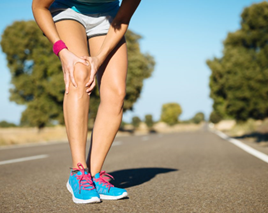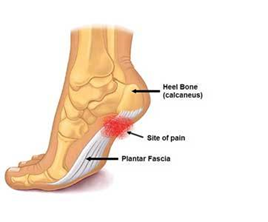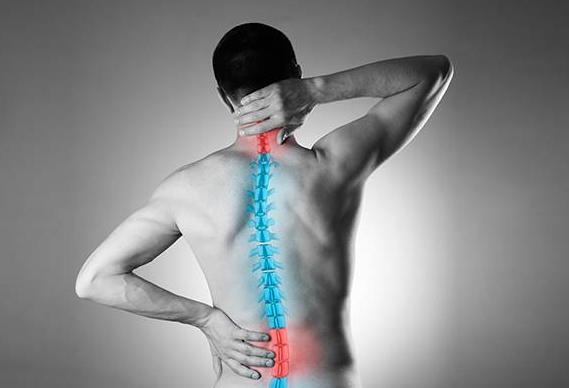
Common running injuries and how to avoid them!
Over 90% of runners will experience one or more of these frustrating injuries during their running career, and once they appear they can be incredibly difficult to resolve.
What are running Injuries?
Running injuries are injuries that occur to muscles, ligaments, tendons, bones or joints as a direct result of the repetitive motion of running. They are generally known as overuse or overload injuries and can occur for a variety of reasons.
Overuse injuries are different to injuries that occur from a trip or fall when running, resulting in acute trauma and are not discussed in this article.
What Causes Running Injuries?
Overuse injuries are commonly experienced by runners but with good running technique, correctly fitting shoes and appropriate training progressions most of these injuries are avoidable.
The cause of an overuse injury is usually easy to work out, for example, a sudden increase in distance, or a novice taking up running in their old gym shoes. However, occasionally, establishing the cause can be complex and multi-faceted. They can even occur with very experienced runners as well as novice runners. This is where advice from an experienced Physiotherapist may help in identifying the cause.
If overuse injuries are caught early, most can be resolved quickly, and with good training and footwear advice, the athlete can be back to their best within days.
- 40% of overuse injuries are due to training errors or inappropriate training loads
- Structural, muscle and soft tissue imbalances (biomechanical asymmetry)
- Poor running form
- Incorrect shoes (minimalist shoes)
- Lack of muscle and tendon strength (especially glutes and calves)
- Poor warm up and stretching
- Insufficient recovery
What are the Symptoms of Overuse Injuries?
- No history of acute trauma
- Gradual onset of pain
- Pain initially presenting as an ache
- Stiffness or aching during or after training
- Increasing periods of time for pain to go away
- Point tenderness
- Noticeable swelling
- Missed training sessions as a result of pain or injury
- A problem that persists.
How to Avoid Running Injuries?
Normally, overuse injuries have a gradual onset and are therefore often ignored for weeks or even months, in the hope they will just go away on their own accord. This differs from an acute trauma like soft tissue injuries, for example, an ankle injury where swelling and pain may be experienced immediately – preventing or limiting any chance of normal running.
Runners are often advised to rest from overuse injury for a few weeks, only to return to running with the injury very quickly returning. Complete rest is not the answer as it doesn’t address the cause and also allows scar tissue to form around the injured area, preventing the damaged fibres from normal function. Active recovery is the key, like aqua-jogging, cycling or a cross-trainer may be advised by your Physiotherapist.
- Don’t ignore overuse injury symptoms
- Figure out the cause (training, shoes etc)
- Avoid large increases in training volume (less than 10% per week)
- Warm up and warm down using dynamic stretching like lunge walks
- Apply active recovery to your training (aqua-jogging, cycling or cross-trainer)
- Develop a good running form (tall-lean technique)
- Include strength training into your program for your core, glute, calf and hamstring muscles)
- Make sure you have the right running shoes for your foot type
- Vary the training surface and terrain (mix it up)
- Reduce downhill running impact (shorten your stride length)
- If it’s not broken, don’t fix it!
How to Treat Overuse Running Injuries?
The key to recovering quickly from an overuse injury is to not ignore the symptoms in the hope they will go away on their own. A few simple steps taken at the first signs of injury will make the difference between a few days of easier training and weeks or even months of not running.
Follow these self-treatment steps at the first signs of an overuse injury:
- Ice 20-30 mins x 3 times daily & Ibuprofen gel (to reduce inflammation)
- Reduce your training volume
- Consider alternative pain-free activities (to prevent formation of scar tissue and maintain fitness) eg aqua-jog, cross-trainer or bike
- Dynamic stretching (stretch with movement) like walk lunges
If your injury has been left too long or is not responding to self-treatment then gain advice and treatment from an experienced Sports Physiotherapist. Shock Wave Therapy has become the treatment of choice for chronic overuse injuries that do not respond to conservative treatment.
Common Running Injuries
1. Runner’s Knee
Runners’ knee or patellofemoral pain syndrome (PFPS) is the most common injury experienced by runners. It involves an irritation between the underside of the kneecap (patella) and the leg bones. Pain develops at the front of the knee, especially running up and downhill or using stairs (especially coming down).
There are a number of possible causes of runner’s knee, the most common being muscle or structural imbalances causing the patella to track incorrectly (mal-tracking) in the groove where it is positioned. Tight muscles like the quadriceps which attach to the patella is another common cause of pain.

2. Achilles Tendinitis
Technically, Achilles tendinitis is inflammation of the tendon that runs down the back of the lower leg just above the heel bone.
However, recent research suggests the inflammatory process is only brief or not at all. This has changed the recognised treatment approach of rest, ice and anti-inflammatories to a more active approach of reducing the load on the tendon along with progressive strengthening.
Symptoms normally begin with an ache along with tenderness when pinching the tendon. Sometimes a thickening will be present. Pain and stiffness may be noticeable first thing in the morning, which eases as you start to walk around.
There can be a number of causes for developing achilles tendinitis including incorrect footwear and training faults like running on uneven ground or big increases in your mileage.
3. Iliotibial Band Syndrome (ITBS)
The Iliotibial Band (ITB) is a thick fibrous band of connective tissue (not muscle) that runs down the outside of your thigh. It originates from your gluteal and other muscles and attaches to the outside of your knee.
In running, (along with the glute medius muscle), the ITB is an important structure for stabilising the leg during stance phase ie whilst the foot is in contact with the ground.
ITBS is more common with long distance runners and commonly causes pain on the outside of the knee. The primary cause is a weakness of the glute medius or running on cambered roads.
4. Plantar Fasciitis
The plantar fascia is a thick fibrous band that runs underneath the foot from the heel to the toes. When running, Its function is to provide strength, stability and shock absorption to the foot during stance phase. The plantar Fasci also helps to maintain the medial arch of the foot.
The most common causes of plantar fasciitis are sudden increases in mileage or changes to the running surface, for example, training on astroturf for the first time or incorrect running shoes.
Pain can be experienced anywhere along the underside of the foot but is most common at the inside if the heel.

5. Patellae Tendinitis
The patellae tendon originates from the lower side of the patella (knee cap) and insets into a bony prominence called the tibial tuberosity approximately 3cm below the patellae. Its function is to provide a greater lever for the powerful quadriceps muscle, a little like a pulley system.
This is normally a training injury than a specific running injury when the athlete’s program involves a lot of jumping or plyometrics. Also, excessive kicking in team sports may trigger the injury or jumping sports like basketball. Once the tendon is aggravated running may become painful especially going down stairs or hills.
Pain and tenderness at the base of the patellae are normally the first signs of developing this condition. It usually begins with pain during a jumping type of activity only but if it is ignored, pain will creep into running and everyday activities.
6. Shin Splints & Stress Fracture
Shin splints is an umbrella term to describe a number of conditions that involve the tibia bone (shin bone). Medial tibial stress and tibial stress fractures are the two most common bone injuries experienced by runners. They can be difficult to distinguish between the two but either way, if you have developed pain anywhere around the tibial bone it is important to have your symptoms accurately diagnosed, as these injuries, if not managed correctly, can stop you running for months.
First signs of an injury developing begin with a mild ache along the shin or to the muscles adjacent to the shin, in particular, the tibialis anterior. This normally occurs near the end of a run and improves with rest. Unlike most other overuse injuries, ignoring these early symptoms can very quickly lead to more serious symptoms and development of stress fractures.
- Medial Tibial Stress Syndrome
This is the most common type of shin splints affecting runners and involves pain anywhere along the inner edge of the shin bone. Pain is normally a dull ache which can radiate along the length of the shin bone. A tissue thickening can often be found around the area of pain. - Tibial Stress Fracture
Unlike MTSS, stress fractures generally present as a sharp, throbbing localised pain. Walking and hopping may also cause pain.
These injuries are commonly seen with new or occasional runners or experienced runners increasing their mileage, especially when on hard surfaces. It is also common with runners of all levels who do not incorporate sufficient recover into their training.
7. Lower Back Pain
Back pain from running is not specifically an overuse injury. However, back pain is very common amongst runners and was worth a mention here.
Lower back pain usually develops as a result of poor posture or running technique. Also, heavier runners are more likely to experience back pain.
In most cases, back pain whilst running can be resolved by adding a few specific exercises to your program.

Injuries – figure out the cause
As Physiotherapists, when we see overuse injuries from any sport, one of the key factors we must establish is what is causing the overuse injury. Is it the shoes, the training, training surfaces, or wear and tear? If you start to develop an injury, think back to what you may have changed. It may be one thing or a combination of things but more often than not there will be something that is different. Try to adjust this change or go back to what was working and see if that helps. If not, it’s time to get help and seek out Physiotherapist who is experienced with running injuries.
Which running shoe prevents injuries?
Running with the correct shoe for your foot type is key to avoiding injury. Foot types can vary, from neutral, pronated, supinated, flat feet and wide/narrow feet. In the past few years, manufacturers have tried to develop a different shoe for every possible foot type and shape, so it’s no wonder we see so many runners attend our clinics with injuries caused by using the wrong shoe for their foot type.
The main function of a running shoe is to protect the foot from the stresses of running which in turn will help protect other areas under stress like the knee and hip. A well-fitting shoe should allow your foot to move naturally thus prevent muscle or joint imbalances or asymmetries that can lead to injury.
Depending on your running style, the impact forces when your foot makes contact with the ground can vary between 2 and 7 times your body weight with every stride. These forces resonate throughout your body, travelling to your shins, knees and hips. So it’s essential you choose the correct shoe with the right amount of support.
Another couple of tips: first, once you find your ideal running shoe, invest in a second pair halfway through the life of the first pair, and wear them in, thereby minimising the structural differences when you change from old to new. Second, never go to a race with a new pair of shoes, especially a different type or style. This is one sure way to pick up injuries!
What are Orthotics?
We are often asked about orthotics—a shoe insert that alters or controls foot motion and helps prevent running injuries. For runners with excessive pronation, flat arches, leg length or other foot discrepancies – inserts can help.
Custom-made orthotics, that we provide at T4 Physio, are designed to control alignment and the function of your foot, all in order to treat or prevent injury-causing force on bones, joints, tendons, and ligaments. Often, they are used to limit motions such as excessive pronation (rolling-in) and excessive supination (rolling-out). They also make activities such as running, walking – even standing – more efficient. What’s more, they can act in way that redistributes pressure on the bottom of the foot so as to relieve pain from excessive pressure or calluses. A true custom made orthotic should fit like a glove. That means, all of the inside, outside, and middle arches along with the heel should be supported.
Warm up correctly
Always allow time to warm up effectively. Most of us have busy lives and often turn up for our training run minutes before the planned session – so the chances of having a proper warm up are gone! Ring any bells? This is a sure way to increase your risk of injury, as well as reduce your performance and enjoyment of the run. How to warm up correctly: allow 10-15 minutes to gradually warm up your muscles and body with jogging at 40-50% of your normal pace, intermixed with dynamic (functional) stretching, for example; leg swings, lunge walking and light skipping. Never over-stretch (especially with static stretching) as this can weaken musculotendinous structures and increase the risk of injury.
Specific strength training for running will reduce the risk of injuries
If running is your main sport focus on developing the key muscle groups which need to be strong in order to maintain correct mechanic and posture whilst running. These will help reduce the risk of injury as well as improve performance.
The key muscles that will benefit from additional strength training are the gluteal muscles, VMO (part of the quadriceps), core and postural muscles. The best functional exercise that engages all these muscles together is overhead lunges. The overhead part helps to keep your spine in correct alignment and engages the core muscles. Single leg squats is also a good alternative exercise.
Core strengthening can make a huge difference in the prevention running injuries or lower back pain. Pilates classes are a good option to provide you with the techniques and progressions. Once you understand these you will be able to do the exercises effectively on your own or continue with a Pilates class.
Other muscles like the calf, hamstring, hip flexors, quadriceps muscles and ITB length are all important for running, but with careful running progressions and following an appropriate training programme, in most cases, these structures will develop naturally.
Exercise variation reduces the risk of running injuries
Runners who only run are more likely to pick up an overuse injury than those who mix running with other sports like cycling, cross-trainer, rowing or gym circuit training classes like HIIT, Boxercise or CrossFit. Pure runners are also renowned for ignoring the early signs of overuse injuries in the hope they will “run it off”. As they don’t have alternative ways to maintain their fitness (whilst offloading the injury) it is hard to resist training thereby further aggravating the injury. Having a varied programme or alternative exercises/sports other than solely running than you can turn to either during injury, active recovery or just as an alternative to running, will greatly reduce the risk of running injuries.
Many people also use running as means to reduce weight, as well as get fit. Running, especially interval training is one of the most efficient ways of burning calories and losing weight. However, if you are a little on the heavy side, running can be hard on the joints; so, to begin with, build up your distance slowly, perhaps two short runs per week of 20-30 minutes. If you require further weight loss activities, consider low impact training/sports or exercise as described above. Also avoid running on roads/pavements as much as possible.
Put as much time into quality recovery as you do with your training
Many runners go for a long run of an hour or two long run, and recover with five minutes of stretching. Recovery is all about allowing time for your body to adapt and recover from training loads. Without appropriate recovery strategies, overload can develop which may eventually lead to injury.
Finally, if it’s not broken, don’t fix it
Running is a sport where the biomechanics are repetitive, in other words, the movement is pretty much the same stride after stride, hence the reason overuse injuries are so common. So when you find the right shoes, the right running style and correct training plan and progressions that works for you – stick to it. Avoid getting drawn into concepts that move you away from what has worked well for you so far.
